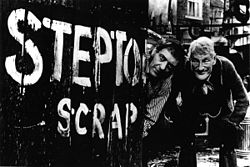Are Likes for the sake of Likes really worthwhile on Facebook?
Facebook’s a funny old thing. It has
undeniably been a huge benefit to establishing Reloved Vintage and through it
we’ve met some wonderful people and picked up a lot of work.
The downside is that the well-publicised
changes to how timelines work and the move to monetize the site have meant that
a smaller percentage of our Likers now see our posts than they would have done
under the previous system.
Still, a Facebook Page is a commodity that every
small business needs to have and we enjoy updating ours and seeing everyone
else’s updates.
One thing we don’t go in for, though, is
the whole ‘Like for a Like’ business.
We don’t mean we won’t Like other
businesses Pages – as Reloved Vintage we Like literally hundreds of small
business Pages from around the world.
What we’re not keen to be a part of are the
Pages that are set up to help boost your number of Likes. You know the ones –
they ask all their Likers to comment on a post and then follow everyone else
who comments in order to give everyone else’s Like count an assisted lift.
We’ve visited these pages in the past and tried them out, but it just feels a
bit strange – a bit sort of, well, cultish. Like there might be a large
crossover with those most rabid of mumsnet posters who probably need to back
away from the computer for an hour or six…
Before anyone gets upset – we don’t think these
little Like-sharing communities are wrong, or immoral – we just don’t think
they’re right for us, so you can put your pitchforks down…
 |
| That's Reloved Vintage, folks... |
We often get Likes from other people who run
a Facebook Page, who then Like our Page with their personal account and tell us
they’ve done so ‘so it counts’.
(For those not too Facebook savvy, you can
like another Page as your Page, but your Like will not ‘count’ – their number
of likers will not go up. Only Likes from personal accounts ‘count’ as Likes).
That’s great and we appreciate it – it all
helps, but here’s where I stand on it all.
I use my personal Facebook account to keep
up with what my friends, former colleagues and people I secretly can’t stand
are getting up to. I don’t want my newsfeed to get clogged up with updates from
business Pages that I, in all honesty, will never buy anything from.
Instead, I use our Facebook Page to Like
other small business like ours. This means that when I’m logged in as RelovedVintage, I can check the timeline and see lots of updates from the Pages we
like. Then, if I see something I think Reloved Vintage’s Likers will also
enjoy, I share it.
For me, this system works much better than
the ‘Like for a Like’ set-up. As it happens, Sugden and Daughters is one of a
few Pages I actually Like with my personal account too, but my one personal
Like is probably not worth as much to them as the several likes they got as a
direct response to Reloved Vintage sharing their photo. These will be likes
from people who like what they do and are all potential customers.
As a Page owner, I’d rather Reloved Vintage
had lots of Likes from people who had found us through another Page sharing our
updates, than double that amount, but largely made up of people who are only
Liking us because we Like them.
We’d love to hear what you think about our
approach to sharing rather than adding a personal Like – are we right, or do
you think we’re wrong?
You can comment below, or on our wall (and
if we like what you say, we might even share it…)





















